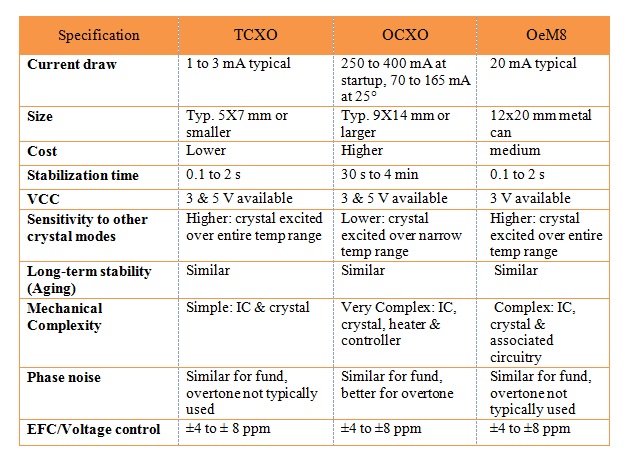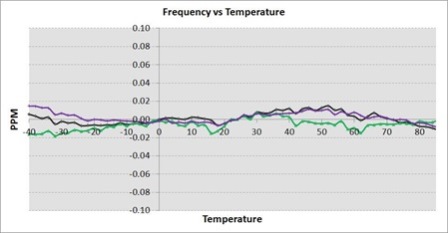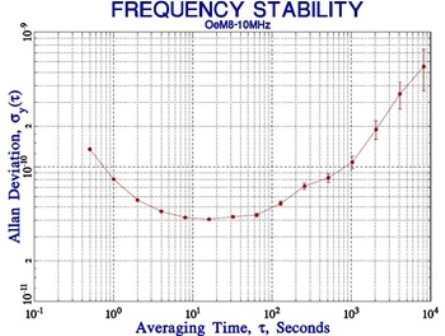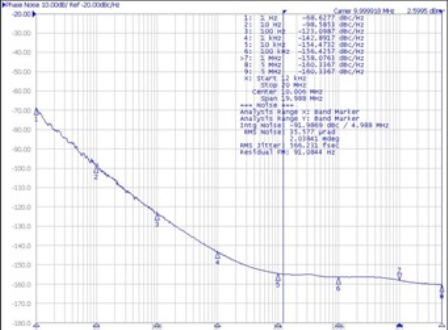BY DAVE KENNY,
Vice President Research and Development,
Pletronics, Inc.,
www.pletronics.com
TCXO technology has been used for many years in cell phone and GPS applications. A TCXO is a temperature-compensated crystal oscillator with a correcting voltage for temperature variation applied to the voltage control pin. The ICs used in this application have a temperature sensor and a 5th -order compensation network that generates the correcting voltage applied to the oscillator.
TCXO technology has advanced significantly, providing clocking solutions once the exclusive province of the oven-compensated (sometimes called ovenized) crystal oscillator (OCXO). The technology used in OCXOs builds a heater around the crystal so the device can be stabilized at a single high temperature and not be exposed to temperature changes in the environment.
According to the American National Standards Institute (ANSI) standard entitled Synchronization Interface Standards for Digital Networks (ANSI/T1.101-1987), a Stratum 3 oscillator requires ±0.28 ppm from –40°C to 85°C. At one time, this could only be supplied using OCXO technology. Now, TCXO technology is the standard technology used to support Stratum 3 requirements.
Even tighter stabilities
TCXOs have been pushed to stabilities tighter than Stratum 3 over limited temperature ranges. The current best-in-class TCXO technology is capable of frequency temperature stabilities of ±50 ppb over a temperature range of 0°C to 70°C. The limiting factor on how well a TCXO can be compensated is the purity of the crystal curve and the order and step resolution of the IC used to compensate the device.
Table 1 shows a comparison between TCXO and OCXO technology. The two most significant advantages of the TCXO versus the OCXO technology are lower power consumption and faster stabilization time. A TCXO typically requires about 1% of the current that an OCXO requires, and stabilization is measured in seconds or fractions of a second.

Table 1. Comparison to some crystal oscillator specifications
Current state of the art
Table 1 also shows a quick comparison of the OeM8 product against the standard TCXO and OCXO technologies. The OeM8, an extension of the OeM series of frequency control devices from Pletronics, is an improved TCXO that extends the ±50 ppb stability to the operational temperature range of –40°C to 85°C.
The OeM8 draws more current, approximately 20 mA, than the typical TCXO, but the current draw is consistent and does not change with temperature like a traditional OCXO. This product extends the ±50 ppb stability into the industrial temperature range, with the low current and quick stabilization times characteristic of the TCXO technologies.
The typical frequency versus temperature characteristic is shown in fig. 1 for three typical devices; the frequency/temperature data is taken with a step size of 1°C. The Allan Variance and phase noise of the device are shown in fig. 2 and fig. 3 , respectively.

Fig.1: Frequency vs temperature performance for three typical OeM8 devices

Fig.2: Allen Variance performance for OeM8 devices

Fig.3: Phase noise for OeM8 devices
Small cell backhaul application
Small cell backhaul requires accurate timing reference for synchronizing and locating purposes. Especially, three-dimensional locating within multi-story structures requires ultra-accurate timing reference. The OeM8 is similar to OCXOs in meeting this requirement. The OeM8 also offers the advantages of faster frequency stabilization and lower power at a lower cost. This performance helps conserve battery life when used in remote locations requiring battery operated power supplies.
While the OeM8 should be considered as standard TCXO in this small cell backhaul application, there is another product, the OeM4, that may be also considered for small cell application. The OeM4 offers a significant price advantage and its performance is similar to the OeM8, but it provides ±50 ppb stability over a narrower temperature range: 0º to 70ºC.
Advertisement
Learn more about Pletronics





